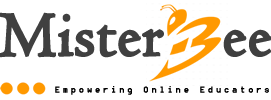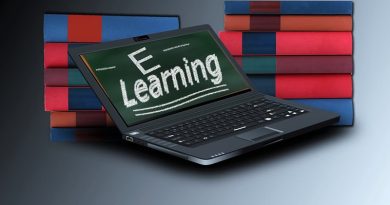Gilly Salmon’s 5 Stages Model: Enhancing Online Learning
In an ever more digitized world, the educational landscape has undergone substantial transformation. Online learning has become a ubiquitous part of modern education, and with it comes a need for effective strategies to engage students and facilitate meaningful learning experiences. One model that has gained recognition and acclaim in the realm of online education is Gilly Salmon’s 5 Stages Model. Developed by Gilly Salmon, a renowned e-learning expert, this model provides a structured framework for designing and delivering online courses. Let’s explore the key components of the 5 Stages Model and how it can enhance online learning.
1. Access and Motivation:
The first stage of Gilly Salmon’s model focuses on getting learners on board and motivated to participate actively in the online course. During this stage, the emphasis is on building a sense of community, setting clear expectations, and providing the necessary resources for learners to access the course materials. Instructors can employ various techniques to motivate learners, such as icebreaker activities, welcoming messages, and making the learning environment user-friendly.
2. Online Socialization:
Building a sense of community and encouraging peer-to-peer interactions is essential for online learning. In this stage, learners are encouraged to engage with their peers and form social connections. Online discussion forums, group assignments, and synchronous webinars are some of the strategies employed to promote socialization. By creating an environment where learners feel connected, they are more likely to stay motivated and persist through the course.
3. Information Exchange:
Once learners have established a sense of community and connected with their peers, the focus shifts to information exchange. This stage involves the active sharing of knowledge and ideas. Instructors facilitate this process by providing opportunities for discussion and collaboration. Assignments, group projects, and peer reviews are examples of activities that promote information exchange. It’s crucial that learners are comfortable with the course content and feel confident in their ability to contribute to discussions.
4. Knowledge Construction:
The knowledge construction stage represents a deeper level of learning. Learners are encouraged to critically analyze information, synthesize their knowledge, and apply it to real-world situations. Instructors may introduce case studies, problem-solving tasks, or complex projects to challenge learners’ thinking and foster higher-order cognitive skills. This stage helps participants move from passive information consumption to active knowledge creation.
5. Development:
The final stage in Salmon’s model focuses on learner development. Instructors aim to help learners consolidate their learning, reflect on their progress, and apply the acquired knowledge and skills beyond the course. This is a stage of self-directed learning, where learners take more control of their education and set personal goals for further development. Instructors may provide guidance and resources to support learners in this process.
Benefits of Gilly Salmon’s 5 Stages Model:
- Structured Learning Experience: The model provides a clear and structured approach to online course design and delivery, ensuring that learners progress through various stages of engagement and learning.
- Promotes Interaction: Salmon’s model emphasizes the importance of building a supportive online community, which can enhance the learning experience and reduce feelings of isolation often associated with online courses.
- Encourages Critical Thinking: The model encourages learners to move beyond passive consumption of information and engage in higher-order thinking, leading to deeper learning outcomes.
- Adaptable to Different Learning Environments: The model can be adapted to various online learning environments, from massive open online courses (MOOCs) to smaller, more intimate online classes.
- Motivation and Retention: By focusing on motivation and socialization in the early stages, Salmon’s model helps improve learner motivation and retention throughout the course.
Gilly Salmon’s 5 Stages Model has proven to be an effective framework for designing and delivering online courses. It addresses the unique challenges of online education, such as learner isolation and disengagement, by providing a clear structure and a roadmap for creating a vibrant online learning community. By following this model, educators can enhance the quality of online education, ultimately leading to more meaningful and effective learning experiences for their students.
Join our exclusive Online Course Delivery training, which is founded on the 5 Stages Model, and embark on a five-week journey of experiential learning. This course will equip you with the skills to design and deliver exceptionally effective online courses. Don’t miss this opportunity to enhance your online teaching expertise!




